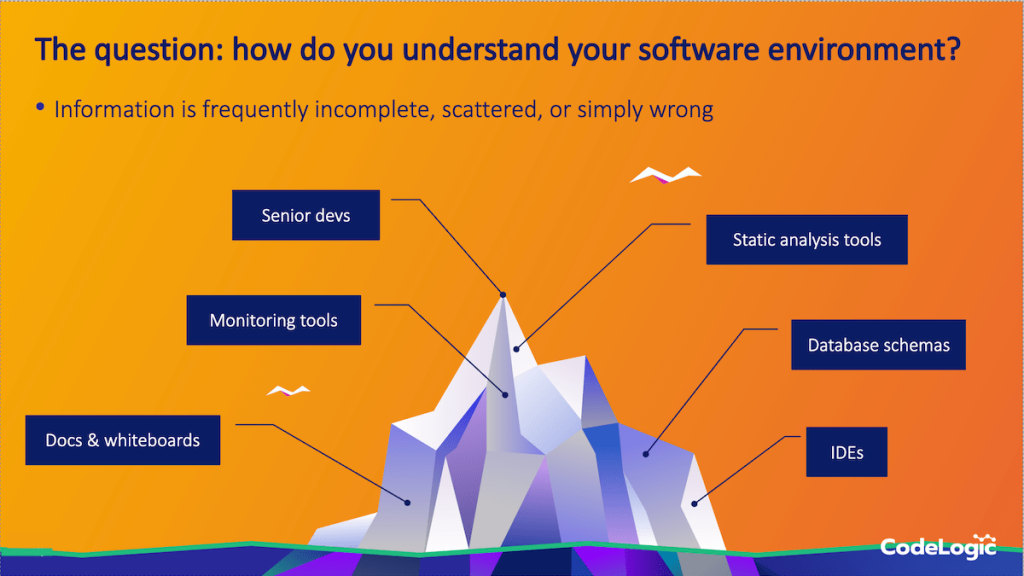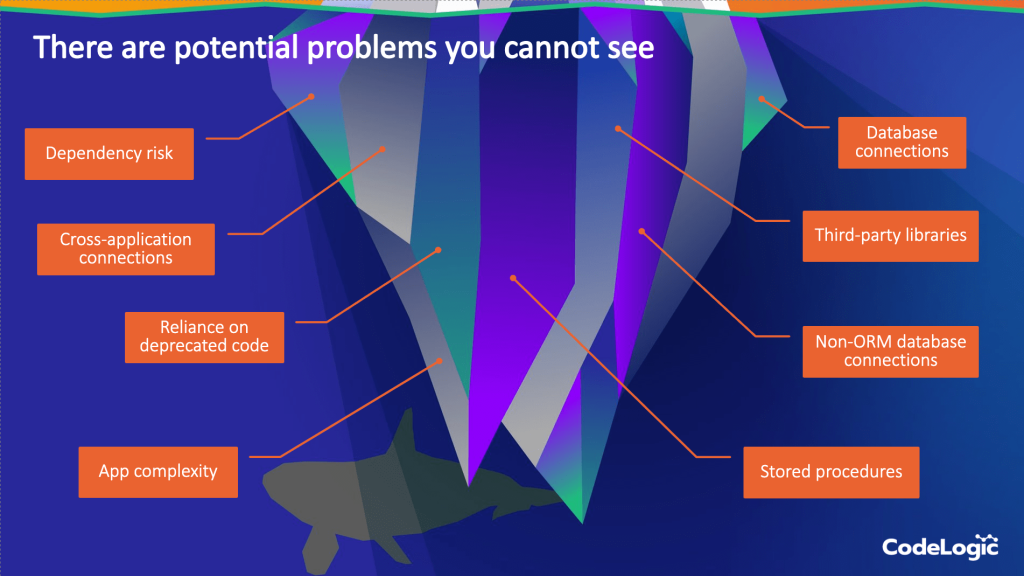Breaking the Guesswork Software Cycle
Breaking the Guesswork Software Cycle
Each year, bad code costs companies a staggering $85 billion. Bad code is inevitable as a result of the growing complexity in software today. Particularly when development speed is critical, and it almost always is, bad code that’s intended to be re-written can quickly become part of the fabric of an application as-is, increasing code complexity and technical debt over time as a result. When this happens, and it almost always does, developers rely heavily on guesswork to build and change software – often using outdated documentation, 6 degrees of separated tribal knowledge, and various testing and tools to inform their decisions.
Most engineers are all too familiar with this scenario: they deploy new code, that code breaks something else, causes an outage, and suddenly it’s all hands on deck as the whole team scrambles to find a fix, fast. While flying blind each time code is altered or added has become the norm, it’s not necessary. Break/fix cycles as a consistent practice consume time, money, and bandwidth, stalling innovation and reliability that can impact user trust in brands.
Thankfully, all hope is not lost: there is a better way. Here’s how to break the guesswork of software cycles, once and for all.
What’s the impact of guesswork in software cycles?
Engineers are frequently pulled into a wasteful cycle of break/fix that drains their resources, time and morale, and results in structural application risk, project delays, and even poor end-user experience. To be clear: software engineers are Rock Stars. They’re on the front lines with all the pressure, piecemealing work-arounds, researching solutions, and approaching their work with as much thought as time allows, which typically extends into the wee hours of the night. And with industry culture often promoting a speedy “trial and error” mentality that proves to be risky and, in some cases, severe, engineers get positioned between a rock and a hard place.
Take Mt. Gox, once the biggest bitcoin exchange in the world. In 2011, a software error saw a wave of transactions created that couldn’t be fully redeemed. More than $1.5 million bitcoin was lost as a result, and to make matters worse, a few years later, a hacking incident added to the losses and forced the exchange to declare bankruptcy.
In another case of costly code, when London Heathrow Airport opened its new terminal in 2008, buggy software for the baggage handling system caused huge disruptions. Luggage belts malfunctioned, thousands of bags were lost, and flights were even canceled. The incident bill totaled nearly $20 million.
The common denominator in these stories? Unwitting Code errors that perhaps could have been avoided had an engineer been better equipped to understand the complete software picture and know all the downstream ramifications of what they were about to touch.
Where is guesswork at play in software cycles today?
When talking about guesswork, we’re referring to instances where engineers don’t have the information they need to make wholly informed decisions about code changes. It’s the difference between “I’ll try this and see what happens” versus “I know that if I do X, Y will happen.” In the previous examples, it’s the difference between bankruptcy and losing $20 million – or, you know, not.
At the moment, most organizations don’t have a total overview of their application structure. Instead, they rely on multiple teams’ unit test coverage, which doesn’t always catch everything. Not to mention, compilers and compiler plugins can introduce their own wild card code into the software equation.
“Engineers simply don’t have the information they need to make wholly informed decisions about code changes, so naturally, they make their best guess.”
~ Senior Director, Application Development
This lack of visibility has become the status quo in software development. It’s so ingrained that many people simply see the issue as an unresolvable fact. Engineers accept that there will be breaks and subsequent fixes, leading to a seemingly never-ending list of fires to put out, and a sustained fear of potential catastrophes with every commit. This often leads to longer working hours that disrupt work-life balance and morale, with increased pressure to produce. Did I mention engineers are Rock Stars?
Code is complex. It inherently contains hidden connections (aka. traps) that make it difficult to estimate how much time teams need to dedicate to bug fixes compared to building new features, let alone scoping bigger strategic projects. No matter how granular your Product Roadmap is, it’s tricky to deliver against the anticipated schedule when unpredictable breaks keep happening, and the code you are working on is relentlessly messed up.
It’s not just the end-user that suffers either—businesses can’t define their milestones as clearly if release setbacks keep occurring. Revenue could decline, investors and stakeholders won’t be happy, and the company’s competitive advantage may become diluted in the marketplace. Did I mention pressure?
All in all, guesswork in software cycles makes success a very slippery slope for everyone involved, with engineers taking the brunt of the weight.
How does CodeLogic delete guesswork?
Here at CodeLogic, we’re a team of engineers that firmly understands this pressure and the endless nuance of the situation. We have felt this pain as much as anyone, and we don’t just sympathize; we’re building continuous software intelligence for fellow engineers to solve this rampant industry problem. We improve software visibility by removing the blind spots that most development tools leave unaddressed.

Rather than only show the tip of the iceberg with solutions like source code scans, we probe downstream binary and runtime code, database schemas and actual inter-app communication to more accurately pinpoint what might break if a change is made. And we reveal it visually, within a searchable directory of your application connections, from API to method, to database.

What would your development cycle look like with continuous software intelligence?
How much time does your development team spend reacting to breakage versus acting on new functionality and forward-facing upgrades?
Ponder for a moment what the results of fewer break/fix cycles would mean for your development team:
- Less time fixing bugs
- More time focusing on new feature development
- Better adherence to milestones and timelines
- Fewer emergency weekend or late calls
- Less launch anxiety
Reducing break/fix cycles equates to increased productivity, moral, and team scalability. Continuous software intelligence empowers dev teams to focus on features that matter most, rather than allocating significant proportions of sprints for bug-squashing.
Full-application mapping through continuous software intelligence encompasses the totality of an application:
- Classes
- Methods
- Inter-application connections
- Database schemas
- Database stored procedures
This high-level, but granular oversight helps prevent breakages from happening in the first place, enabling your dev team to code fearlessly at scale, with significant predictive value.
Find out how you can reduce break/fix cycles by scheduling a demo of CodeLogic’s continuous software intelligence platform.
